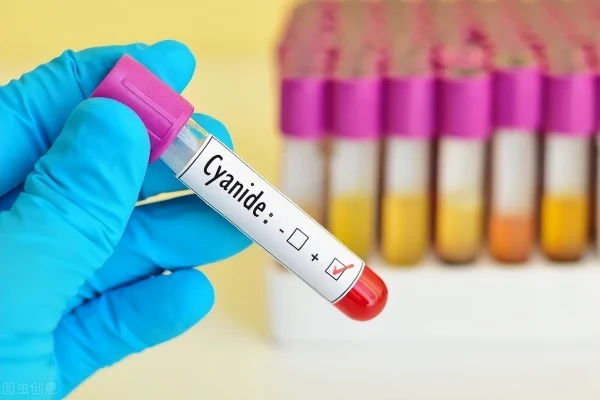
In the realm of modern mining, Heap Leaching has emerged as a widely adopted and cost - effective method for extracting gold from low - grade ores. Among the various components of this process, Cyanide, particularly Sodium Cyanide (NaCN), plays a pivotal role.
The Significance of Sodium Cyanide in Gold Extraction
Statistics reveal that sodium cyanide is utilized in over 80% of Gold Extraction processes. This high rate of application underscores its importance in the mining industry. For instance, in a mine in Tanzania, after the introduction of Sodium cyanide as a leaching agent, remarkable improvements were witnessed. The ore dressing recovery rate soared from the original 60% to 85%, and the output also increased significantly. These figures not only demonstrate the effectiveness of sodium cyanide in the beneficiation process but also highlight its crucial role in enhancing gold recovery rates and production volumes.
The Mechanism of Sodium Cyanide in Heap Leaching
In the heap leaching process, the low - grade gold ores or flotation tailings are piled on a specially constructed impermeable pad. Then, a solution of sodium cyanide is sprayed over the ore heap in a cyclic manner. In the presence of oxygen (usually from the air), sodium cyanide reacts with the gold in the ore. The chemical reaction can be generally expressed as follows: 4Au + 8NaCN + O₂+ 2H₂O = 4Na[Au(CN)₂]+ 4NaOH. Through this reaction, gold forms a soluble complex, sodium aurocyanide (Na[Au(CN)₂]), which then dissolves in the solution and can be further recovered.
Advantages of Using Sodium Cyanide in Heap Leaching
High Efficiency: As shown in the Tanzanian mine example, sodium cyanide can effectively dissolve gold from ores, leading to a significant increase in the recovery rate. This high efficiency in extracting gold from low - grade ores makes heap leaching with sodium cyanide a viable option for mines that would otherwise be considered uneconomical.
Cost - effectiveness: Compared to some other methods of gold extraction, the use of sodium cyanide in heap leaching is relatively inexpensive. The overall cost of the heap leaching process, including the cost of sodium cyanide, is often lower than that of more complex and energy - intensive extraction methods. This cost - effectiveness is a major factor contributing to its widespread use in the mining industry.
Challenges and Precautions Associated with Sodium Cyanide
Toxicity: Sodium cyanide is highly toxic. Any leakage or improper handling of the cyanide solution can pose a serious threat to the environment and human health. Therefore, strict safety measures and environmental protection protocols must be in place during the storage, transportation, and use of sodium cyanide. Mines are required to have well - designed containment systems to prevent cyanide spills and efficient treatment methods for cyanide - containing waste solutions.
Regulatory Compliance: Due to its toxicity, the use of sodium cyanide is subject to strict regulations in many countries. Mining companies must comply with these regulations regarding the storage, handling, and disposal of cyanide. This includes regular monitoring of cyanide levels in waste effluents and ensuring that they meet the permitted environmental standards.
In conclusion, sodium cyanide is an indispensable reagent in the heap leaching process for gold mining. Its high efficiency and cost - effectiveness make it a preferred choice for extracting gold from low - grade ores. However, the associated toxicity and regulatory requirements necessitate careful handling and strict compliance to ensure sustainable and safe mining operations.
- Random Content
- Hot content
- Hot review content
- Toxicity Assessment of Sodium Cyanide and Relevant Hazard Prevention Measures
- 31%-36% HCl/Industrial Grade Hydrochloric Acid
- T-610 collector Salicyl oxime acid derivative Content 3.5%
- Sodium bisulfite 99% High Quality Factory Supply
- Dodecylbenzenesulfonic acid
- 2-Hydroxyethyl acrylate (HEA)
- butyl vinyl ether
- 1Discounted Sodium Cyanide (CAS: 143-33-9) for Mining - High Quality & Competitive Pricing
- 2Sodium Cyanide 98% CAS 143-33-9 gold dressing agent Essential for Mining and Chemical Industries
- 3Sodium Cyanide 98%+ CAS 143-33-9
- 4Anhydrous Oxalic acid 99.6% Industrial Grade
- 5Soda Ash Dense / Light 99.2% Sodium Carbonate Washing Soda
- 6Oxalic acid for mining 99.6%
- 7Calcium hydroxide Industrial Grade 90%
- 1Sodium Cyanide 98% CAS 143-33-9 gold dressing agent Essential for Mining and Chemical Industries
- 2High Quality 99% Purity of Cyanuric chloride ISO 9001:2005 REACH Verified Producer
- 3 High-Quality Sodium Cyanide for Leaching
- 4Powdery emulsion explosive
- 5Industry Grade Electron grade 98% Sulfuric Acid H2SO4 Sulphuric Acid Battery Acid Industrial Sulfuric Acid
- 6Colloidal emulsion explosive
- 7sodium hydrosulfide 70% flakes used Mining Industry












Online message consultation
Add comment: